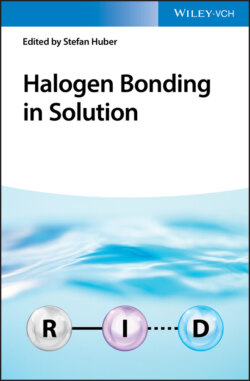Читать книгу Halogen Bonding in Solution - Группа авторов - Страница 25
1.3.5 Crystallographic Studies Conclusion
ОглавлениеSolid‐state evaluations of the halogen bond are vast, with numerous reviews written on the topic [7,58–65]. This section provided a topical survey highlighting some of the diversity within the field. However, one significant topic that was purposely omitted was halogen bonding to anions [115,116] as many of the later chapters include aspects of halogen bonding to anions in solution (e.g. quantification, receptors, transport, catalysis). Other solid‐state halogen bonding topics that have been omitted for brevity include solid‐state NMR [117,118], porous crystalline materials [119–121], crystalline rotors [122,123], polyhalides [124–126], cosublimation [127], energetic cocrystals [127], and intramolecular halogen bonding [128]. Looking forward, crystallography will continue to be an important research tool that complements studies of halogen bonding in solution.
Figure 1.13 Cocrystallization components and pre‐polymerization structures of 1,4‐diiodo‐1,3‐butadiyne with oxalamide derivatives. CCDC ref codes: WANNUV01 (left), CEKFUU (right).
